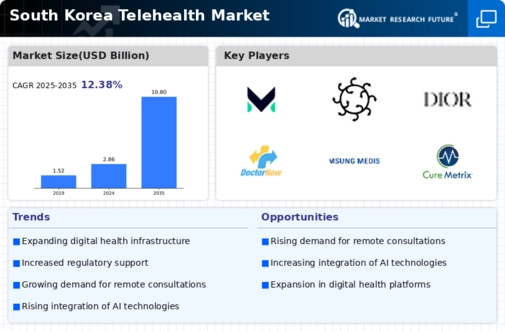The South Korea Telehealth Market has been gaining significant traction over the past few years, propelled by advancements in technology and an increasing demand for accessible healthcare solutions. Telehealth services in South Korea are designed to leverage digital platforms and remote monitoring tools to offer patients efficient healthcare services without the need for physical consultations. As the population becomes more accustomed to digital solutions and as the technological infrastructure improves, the competition among telehealth providers intensifies.
This competitive landscape features a variety of players, each aiming to capture market share through innovative solutions, quality service delivery, and strategic partnerships that strengthen their foothold in the rapidly evolving market.MDTech is one of the notable players in the South Korea Telehealth Market, recognized for its robust platform that combines cutting-edge technology with user-friendly interfaces. The strength of MDTech lies in its commitment to enhancing patient experiences through seamless telehealth functionalities, allowing users to schedule appointments easily, consult healthcare professionals, and access medical records online.
With a focus on integrating artificial intelligence and data analytics into its services, MDTech stands out by providing personalized care solutions that cater to individual patient needs. Additionally, MDTech's strong presence in the South Korean market is bolstered by partnerships with local healthcare providers and institutions, ensuring a comprehensive healthcare approach that boosts its competitive edge in telehealth services.
Everywhere has carved a niche in the South Korea Telehealth Market by offering a suite of innovative telehealth services aimed at improving access to healthcare for all segments of the population. The company's key offerings include virtual consultations, remote patient monitoring, and innovative health management solutions that focus on chronic disease management. Everywhere's strengths are rooted in its strategic collaborations with local hospitals and insurance providers, which enhance its service reach and credibility in the market. Moreover, the company has actively pursued mergers and acquisitions to augment its capabilities and expand its service offerings within the South Korean healthcare ecosystem.
This aggressive growth strategy, coupled with its emphasis on patient engagement and satisfaction, positions Everywhere as a formidable competitor in the South Korean telehealth landscape, effectively meeting the evolving demands of patients and healthcare professionals alike.









